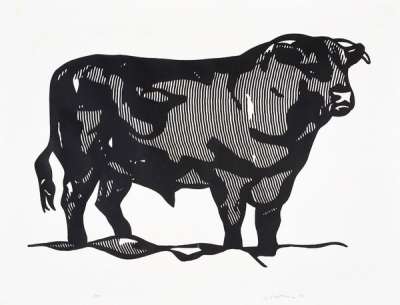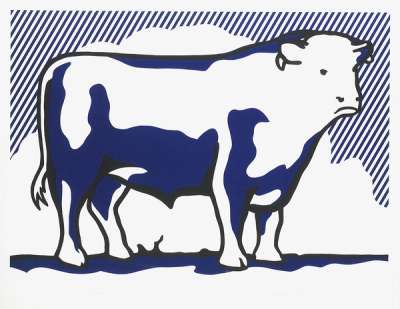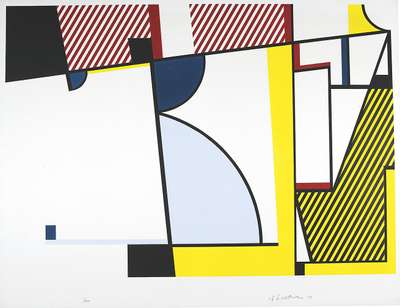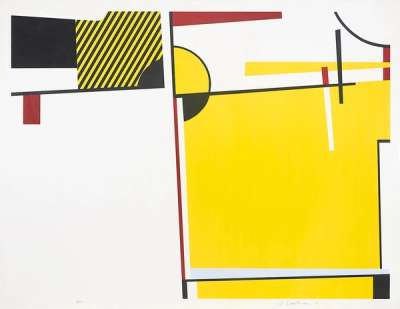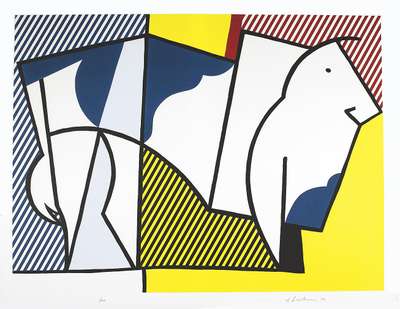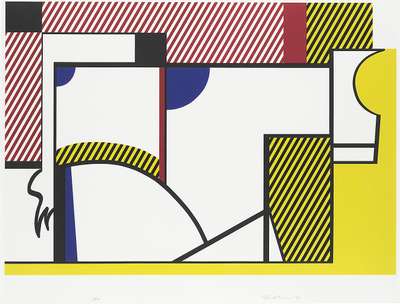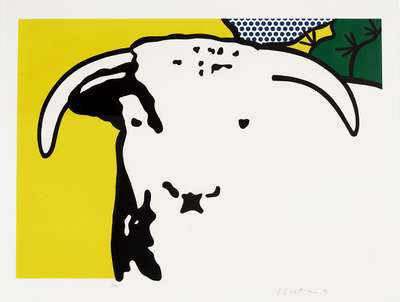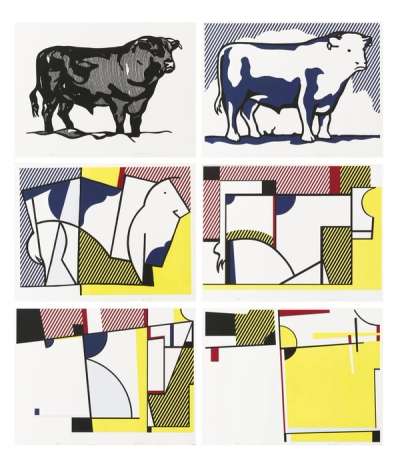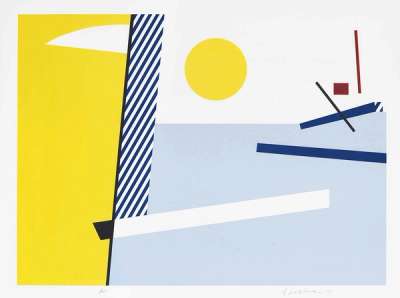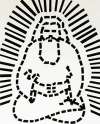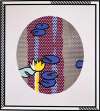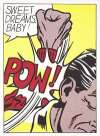Bulls
Roy Lichtenstein's Bulls series is based on Pablo Picasso's 1945-46 lithographic series Le Taureau. Each print is a compositional development of the last, slowly becoming more abstract and cubist-inspired. This gradation pokes fun at modernism, by blurring the sharp distinction between figurative and abstract representation that it relies upon.
Roy Lichtenstein Bulls For sale
Bulls Value (5 Years)
Works from the Bulls series by Roy Lichtenstein have a strong market value presence, with 83 auction appearances. Top performing works have achieved standout auction results, with peak hammer prices of £208945. Over the past 12 months, average values across the series have ranged from £4439 to £208945. The series shows an average annual growth rate of 15.11%.
Bulls Market value
Auction Results
| Artwork | Auction Date | Auction House | Return to Seller | Hammer Price | Buyer Paid |
|---|---|---|---|---|---|
 Bull III Roy Lichtenstein Signed Print | 21 Oct 2025 | Phillips New York | £11,475 | £13,500 | £19,000 |
 Bull (complete set) Roy Lichtenstein Signed Print | 26 Sept 2025 | Sotheby's New York | £161,500 | £190,000 | £270,000 |
 Bull IV Roy Lichtenstein Signed Print | 16 Apr 2025 | Christie's New York | £9,775 | £11,500 | £15,000 |
 Bull II Roy Lichtenstein Signed Print | 16 Apr 2025 | Christie's New York | £19,550 | £23,000 | £30,000 |
 Bull VI Roy Lichtenstein Signed Print | 16 Apr 2025 | Christie's New York | £9,775 | £11,500 | £15,000 |
 Bull I Roy Lichtenstein Signed Print | 16 Apr 2025 | Christie's New York | £10,625 | £12,500 | £17,000 |
 Bull V Roy Lichtenstein Signed Print | 16 Apr 2025 | Christie's New York | £10,200 | £12,000 | £16,000 |
 Bull Head III Roy Lichtenstein Signed Print | 31 Jan 2024 | Bonhams Skinner | £5,100 | £6,000 | £7,500 |
Sell Your Art
with Us
with Us
Join Our Network of Collectors. Buy, Sell and Track Demand
Meaning & Analysis
In his graphic, semi-abstracted Bulls series, Lichtenstein draws primarily on Pablo Picasso’s lithographic series The Bull (Le taureau), from 1945-46. His first sequence of six prints was titled Bull Profile series, and the follow up three part sequence he named Bull Head series. Each print in both series expanded upon the composition of the one that came before. The gradual process of abstraction was notable only when the sequences were regarded in their entirety.
Lichtenstein would periodically return to the same compositional device over his career, see Cow Going Abstract (1974) and Tel Aviv Mural (1989) as examples. In 1989, Lichtenstein permitted the organization Artists to End Hunger, Inc. to reproduce his Bulls prints on a set of porcelain plates to benefit their campaign.
In his Bulls series, Lichtenstein draws primarily on Pablo Picasso’s lithographic series The Bull (Le taureau), from 1945-46, and Theo van Doesburg’s pencil studies for The Cow, from 1916-17. Both artists rendered bovines abstract, demonstrating the modernist belief that universal truth could exclusively be revealed through the distillation of forms.
Lichtenstein parodies this presumption in his Bulls series, by calling into question the alleged distinction between realistic and abstract depictions. He is interested in the transformation of the art form, rather than the transformation of the image itself. Studying 1970s cattle sales catalogues, he bases his imagery on photographs found in these registers, reworking them through drawings and preparatory collages.
The subject matter in the two Bulls series has no history, nor is it invested with personal symbolism. All prints represent a bull, but the manner of representation differs, mapping a progressive shift from figuration to abstraction. Both sequences aspire to playfully obscure the animal's naturalistic shape, until it is rendered indecipherable in a colourful arrangement of coded geometric shapes. In the final impression of both the Bull Profile series and Bull Head series, the bull’s particular anatomic qualities are reduced to pure essential forms.
Ultimately, the prints in this series exhibit an investigation of the process of simplification, without the implied search for a higher meaning. Lichtenstein enables an interactive dynamic between artist and beholder, wherein the spectators become active participants in reception as they follow along the sequences.
